If you’ve found yourself spending one too many coloring sessions with your kids doodling leis and surfboards, you might be ready to pull them out of school for a week to head to Hawaii.
So, is February a good time to go to Hawaii?
Yes, February is a great time to go if you want to witness Hawaii’s famous large waves and enjoy exploring the islands in cooler weather. In fact, it’s one of the most popular months for people to visit.
We love taking our family to Hawaii because of the cultural and active, nature-based experiences it offers. So, we’re excited you’re thinking of doing the same and will share the must-knows of traveling to Hawaii in February so that you can have a memorable family vacation.
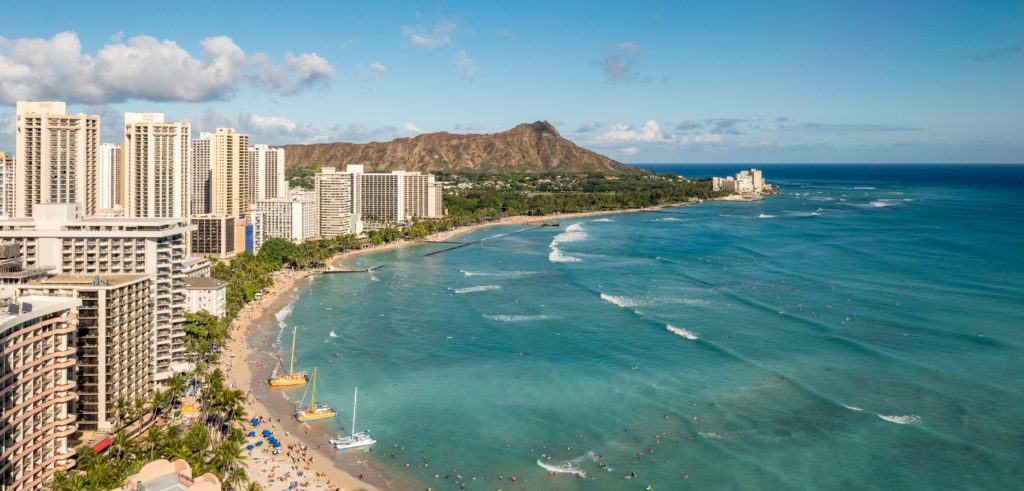
Understanding Tourist Seasons in Hawaii
February falls during the heart of the high season in Hawaii. Crowds pile into Hawaii to celebrate the holidays starting in mid-December. Higher tourist populations then remain through March.
At first glance, it can seem counterintuitive that Hawaii’s high season is during its rainy season. However, it’s rare for there to be all-day-long downpours on the islands. Instead, showers that come and go throughout the day and night are more common.
Furthermore, February is an ideal time for surfing large waves in Hawaii. So, the islands receive an influx of advanced surfer tourists and loads of tourists who want to watch surfing competitions.
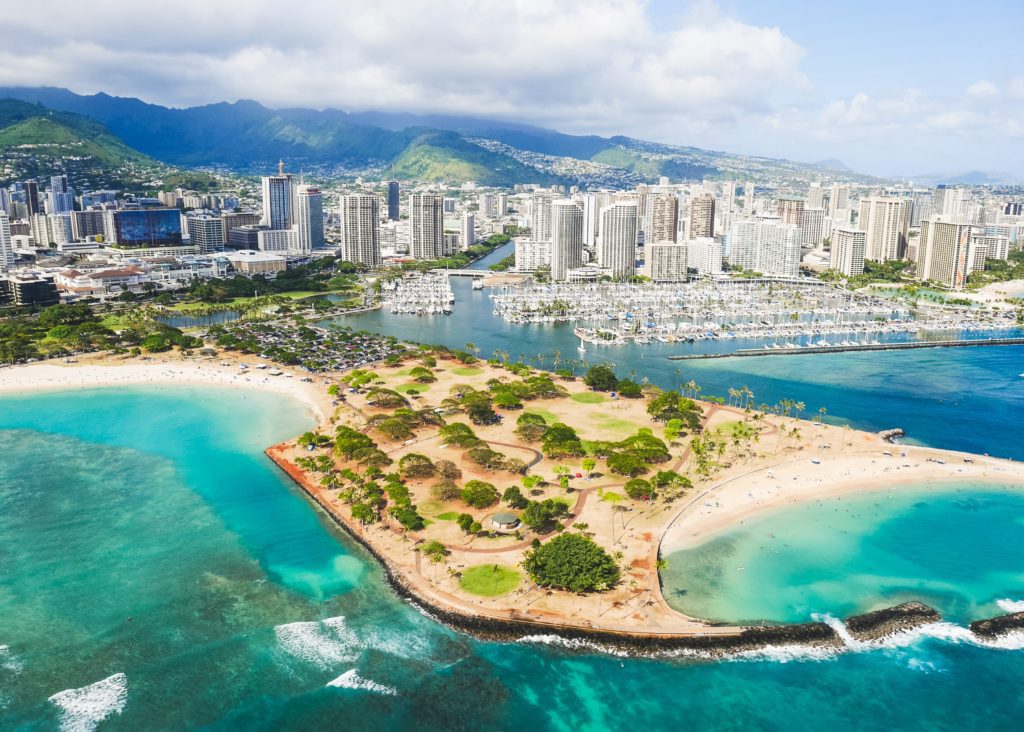
The Low-Down on Hawaii’s Weather in February
Hawaii is in the northern hemisphere, so you’ll be traveling there during the winter if you visit in February. Don’t worry; you won’t encounter snow.
Instead, people flock to Hawaii in February because it offers comfortable weather for outdoor exploration despite the higher chance of rain.
Temperature
The average high temperatures in Hawaii in February are in the mid to upper 70s. It’s rare for the islands to exceed 82°F, making that time of year a great fit for families with kids who melt in warmer weather.
Once the evening rolls around, you can expect temperatures to drop to the upper 60s. So, it’s often chilly enough to warrant a jacket, especially if you’ll be in a windier place like the beach.
For reference, January and February are the coldest months in Hawaii, and August is the hottest month.
Regardless of the temperature at sea level, if you plan on visiting Kokee State Park on Kauai or the volcanoes on Big Island, pack pants and a jacket. Because these are higher elevation areas, they’re always colder than when you’re by the water.
Water Temperature
You’ll have a hard time believing it’s winter when you step foot in Hawaii’s waters in February—the average water temperature is a comfy 75°F.
Warm water temperatures are an iconic feature of Hawaii regardless of the season. So, it’s ideal for swimming.
That said, unlike the summer, some of the biggest waves hit Hawaii’s shore in February, and riptides are frequent in many areas. So, investigate safe beaches for swimming before letting your little ones enter the water.
Humidity
Despite a relatively high amount of rain in Hawaii during February, the islands usually don’t have oppressive amounts of humidity. Instead, the chances of muggy days range in the mid-30 percent.
That’s not to say your hair won’t frizz from some humidity, though. The majority of the days in February have enough moisture to make you rock the frizz look.
Amount of Sunshine
February is a month with some of the clearest days in Hawaii. On average, there’s about a 23% chance of overcast or mostly cloudy skies at any time during the month.
But for the most part, you can expect to enjoy significant bouts of sunshine through either clear, mostly clear, or partly cloudy periods. It can seem strange to learn this, given that February falls during one of the rainiest months on the island.
What can we say? That’s one of the many reasons that so many people love Hawaii; even during its “worst” weather, it’s still blissfully pleasant.
Precipitation
February is one of the rainiest months in Hawaii, but it doesn’t mean your trip will be a washout. On the contrary, even the rainiest month of December allows visitors to enjoy a vacation packed with exciting and mostly uninterrupted adventures.
That said, the leeward (downwind) side of Hawaii’s islands typically has relatively less rain. Examples of leeward-facing areas of Hawaii include:
- South and southwestern parts of Oahu
- Kohala Coast on Big Island
- Southern Maui
As a silver lining, the rain often comes at night regardless of where you stay and visit in Hawaii. So, while your family will likely experience some rain showers during your February trip, you can expect a decent amount of partial or full sunny days.
To give you an idea of total rainfall for February, the moving 31-day rainfall average for the entire month is about 2.1 inches.
Wind
The wind picks up a bit in Hawaii as February progresses, but it’s so minor that you likely won’t even notice it (an average of 12.7 miles per hour compared to 13.5 miles per hour).
Furthermore, the side of any given island you’re on makes a difference in how much wind you feel, with leeward-facing areas sheltered from the strongest winds.
Although the wind can cause people to get a bit chilly at night, it’s usually welcome during the day as you get your heart rate up exploring the islands.
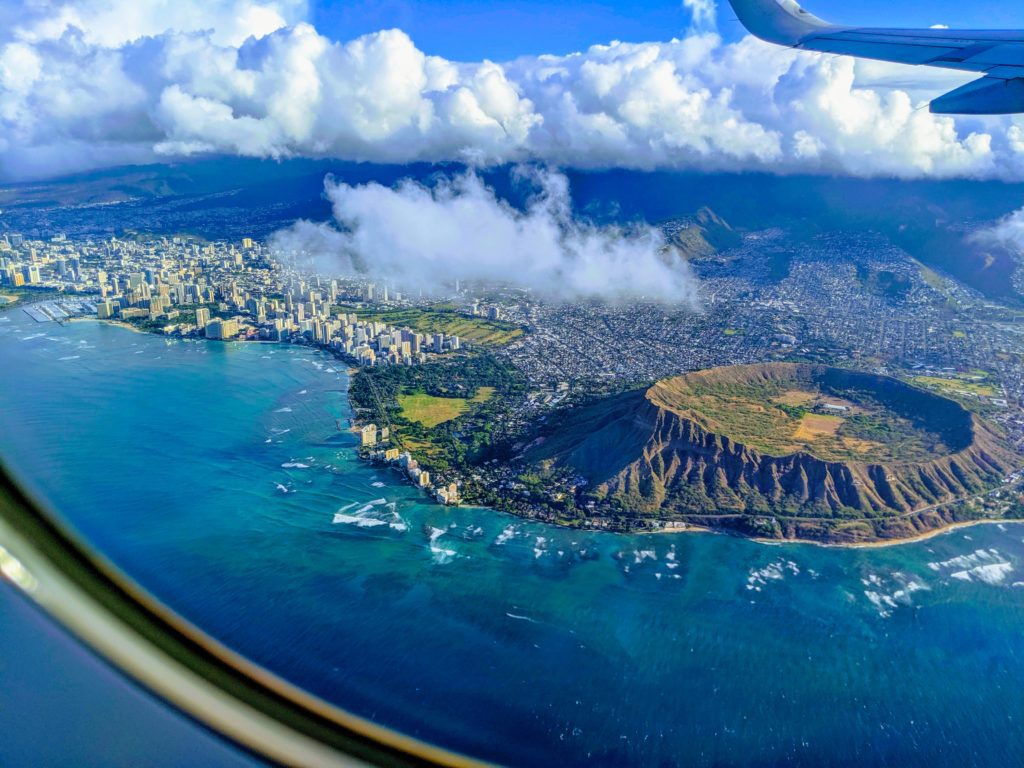
Daylight Hours
The daylight in Hawaii in February is relatively short, but we don’t think it’s a reason to change your plans to June, which is when the islands have the most amount of daylight.
Since Hawaii sits relatively close to the equator, it doesn’t experience extreme daylight fluctuations as countries like the United States and Canada.
If you travel to Hawaii on February 1st, sunrise happens at 7:08 am, and sunset takes place at 6:21 pm. Should you be in Hawaii on February 28th, you’ll have gained 16 minutes of daylight in the morning and 14 minutes in the evening.
Will a Cyclone Impact Your Trip in February?
Are you wondering, “Is February a good time to go to Hawaii to avoid a cyclone?” Yes, it absolutely is.
Cyclones occur from June 1st to November 30th, so your family won’t have to worry about a tropical storm putting a kink in your travel plans. But even if you decide to travel to Hawaii during cyclone season, these storms don’t often make direct landfall.
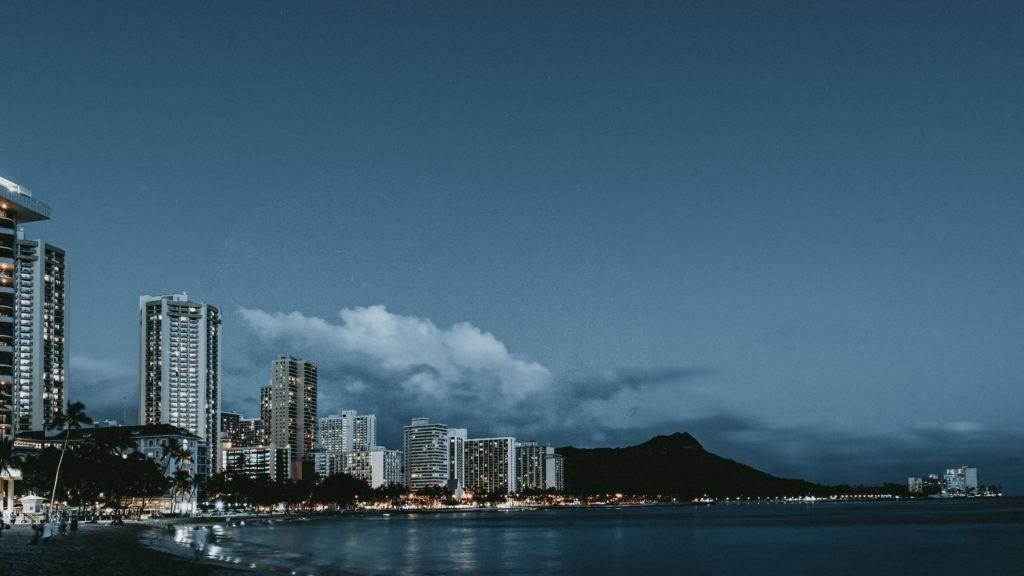
Surfing Conditions in February
The earlier you travel in February, the higher the chance you’ll encounter Hawaii’s famous massive waves. While these waves aren’t for the faint of heart, they’re a thrill for advanced surfers wanting to practice their skill.
From a spectator’s point of view, February is one of the best months to watch the surfers in Hawaii with your family. Some of the best spots to watch surfers tackling massive waves include:
- The Banzai Pipeline
- Honolua
- Laniakea
- Sunset
- Backyards
All but Honolua, which is in Maui, are along Oahu’s North Shore. So, you can reserve a day for beach hopping between these destinations.
If you get lucky, you might be able to witness a surfer cruising along a 50+ foot wave. We recommend keeping an eye on the National Weather Service’s website for details on surf conditions, giving you a feel for when surfers may be hitting the water.
Planning your travel dates so that your vacation lands during one of many surfing competitions in February can be a fun experience for kids.
Are Sea Turtles in Hawaii in February?
There are sea turtles on Hawaii’s shores in February, but seeing them isn’t as common as in the summer. Green Sea Turtles display rare behavior in Hawaii, as most sea turtles come onshore to lay eggs.
But in Hawaii, particularly at Laniakea Beach, these adorable creatures arrive at the beaches to rest and bask in the sun. Since sea turtles are ectothermic, the sun helps to warm their bodies.
Green Sea Turtles prefer to lay onshore when the waves are relatively calm. Therefore, the summer months are the best time to view them. Nevertheless, if you look for them at peak times, such as between 11:00 am and 1:00 pm or shortly before sunset, you might be able to spot some.
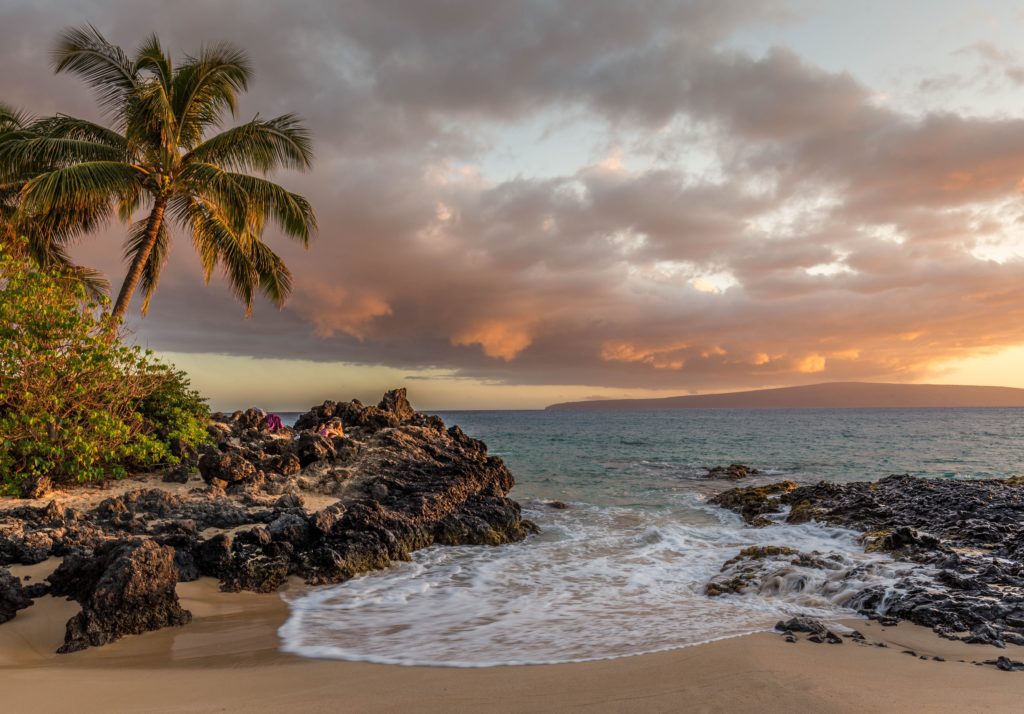
Are There Mosquitos in Hawaii in February?
In February, you can encounter mosquitos in Hawaii, but they don’t come in droves like during the summer. That’s because mosquitos thrive in warm weather.
Once the temperature reaches 60 degrees, mosquitos become lethargic. The situation gets even more dire for them once the temperature drops below 50 degrees, as they can no longer function.
However, since Hawaii never gets as cold as 50 degrees (with the exception of high-altitude areas), there’s always the chance that you could have a run-in with some mosquitos in February.
February Events in Hawaii
If you’re interested in giving your kids a Hawaii vacation that’s both fun, cultural, and educational, you might be wondering—is February a good time to go to Hawaii for local activities?
Yes, it is. Below are some of the most popular events and activities you can participate in during your trip.
Humpback Whale Watching
February is prime time for Humpback Whale watching in Hawaii. These massive baleens can grow nearly 50 feet long and migrate from Alaska to mate in warmer water.
If your vacation budget is already tight, you can try taking your kids to Honolulu or North Shore to see if you can spot any Humpback Whales from the shore. However, the best way to view these creatures is by taking a boat tour.
Maui Whale Festival
What better way to combine Humpback Whale watching than taking your kids to the Maui Whale Festival?
During the month of February, the Maui Whale Festival holds several events to celebrate and raise awareness about Humpback Whales. They base their activities around education, so it’s an excellent way for you and your kids to learn more about Hawaii’s beloved marine mammal.
Waimea Cherry Blossom Heritage Festival
If you think you must travel to Japan to see the infamous cherry blossoms, Hawaii will make you change your mind.
Cherry blossom season on the islands happens from January to March. So, you’ll be smack-dab in the heart of the blossoms by traveling in February. And while you’ll likely encounter many blooms on your own as you explore the islands, participating in the Waimea Cherry Blossom Heritage Festival adds extra excitement and education for children.
Surfing Competitions
We already talked about surfing, but it’s worth mentioning it again, given that seeing large waves is one of the “biggest” reasons why people want to travel to Hawaii in the winter.
The North Shore in Oahu is one of the most popular places for surfing competitions. You can check online to see if an upcoming surfing event aligns with your travel dates (or to arrange your trip around the dates).
Should you decide not to travel during February or another peak time during the winter, all hope isn’t lost; smaller competitions also occur during the summer.
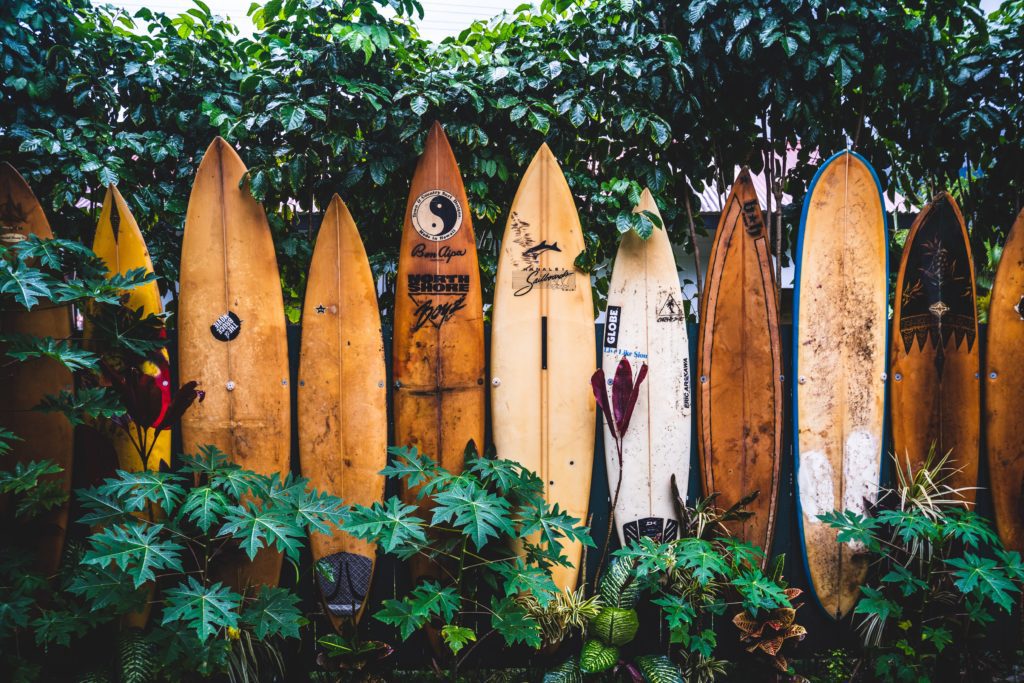
The Bottom Line
You likely won’t encounter many young children vacationing in Hawaii in February, given that most are in school. But since February is the high season for general tourism in Hawaii, you’ll experience more crowds than during the summer.
Nevertheless, February is a great time to visit Hawaii if you prefer cooler weather, you don’t mind some passing rain, and you’d like to experience watching surfers navigate large waves.
That said, any time of year is an excellent time to visit Hawaii. So, if February’s weather sounds too chilly for your liking or you picture yourself steering clear of the beach at the thought of such big waves, the summer is an excellent time to travel too.
Regardless of when you travel, if your kids are anything like ours, they’ll talk about your Hawaii vacation long after you return home.
More about our TFVG Author
A seasoned traveller, Dad, and avid sports tourist, James foundered The Family Vacation Guide to share his expert vacation experiences- especially when it comes to being a travelling family man.
Featured in Travel articles such as Travel + Leisure, TripSavvy and SFGate, you know you're reading some of the best vacation tips online.





